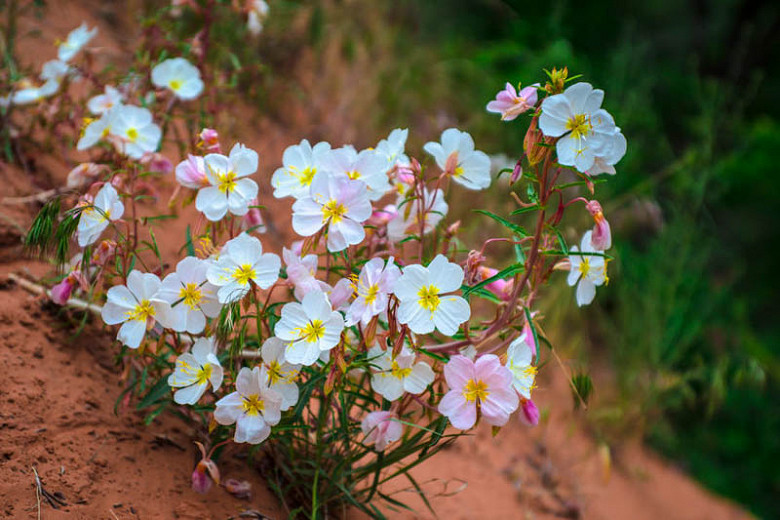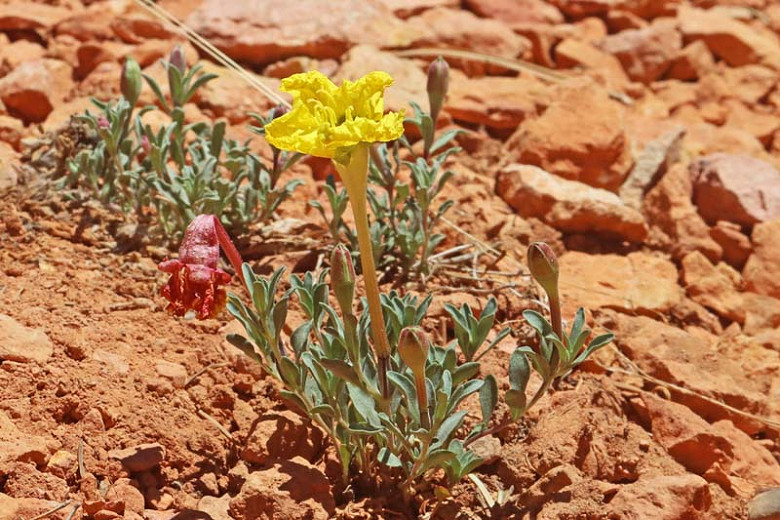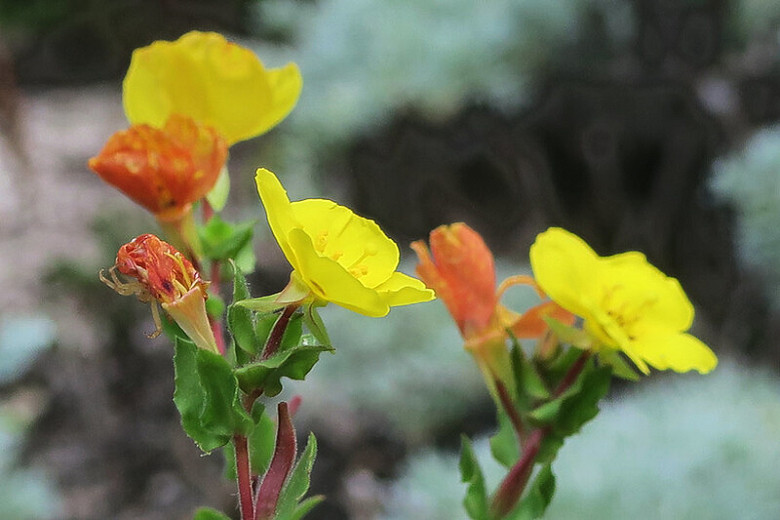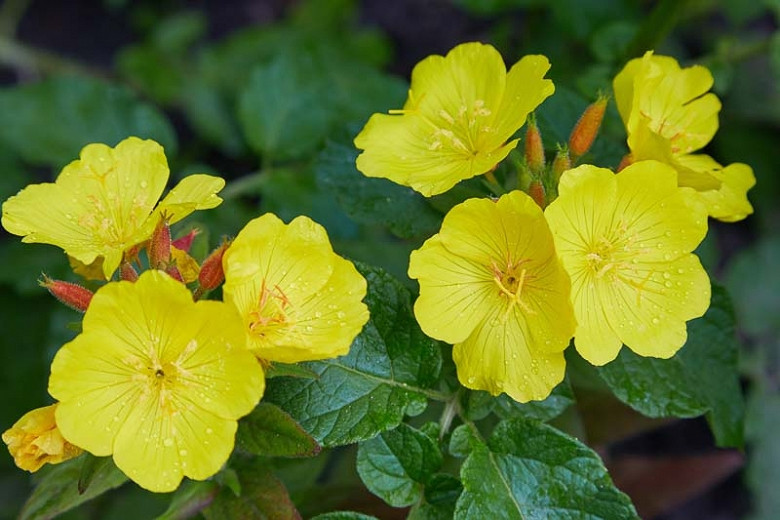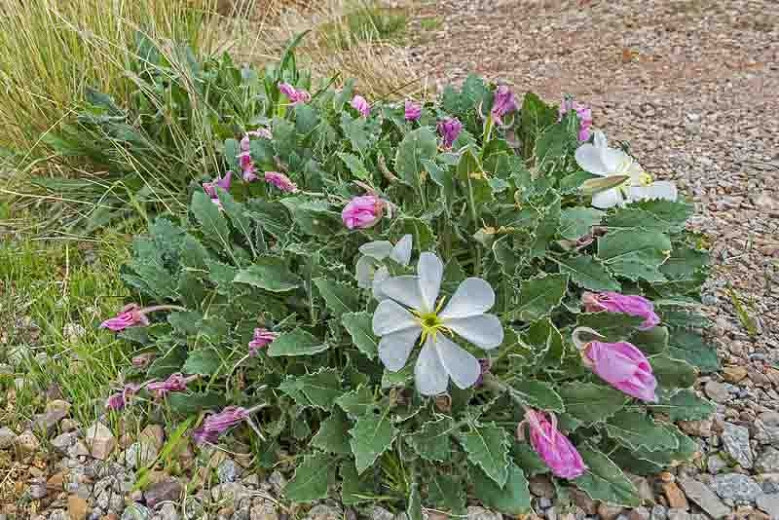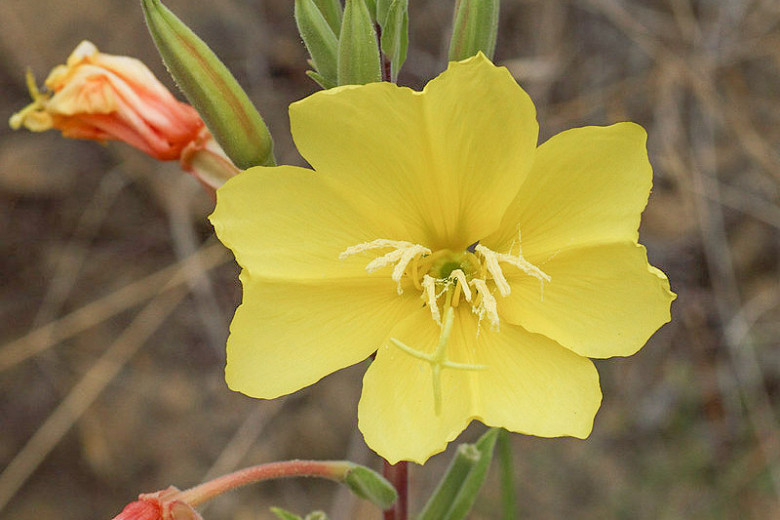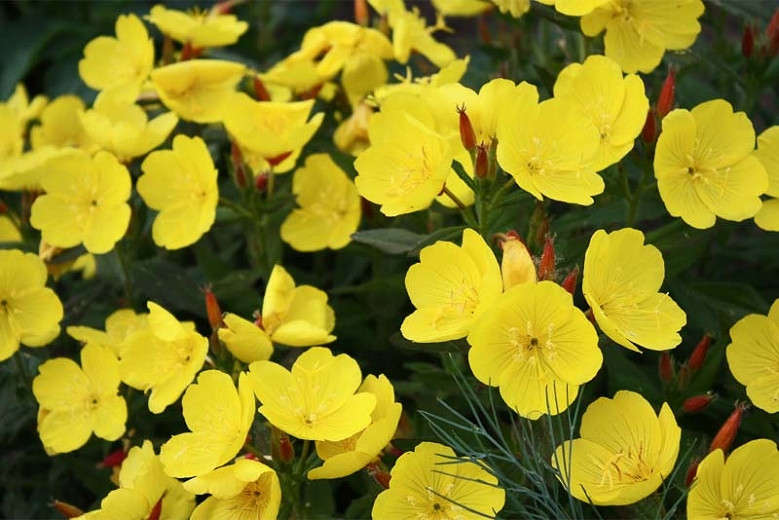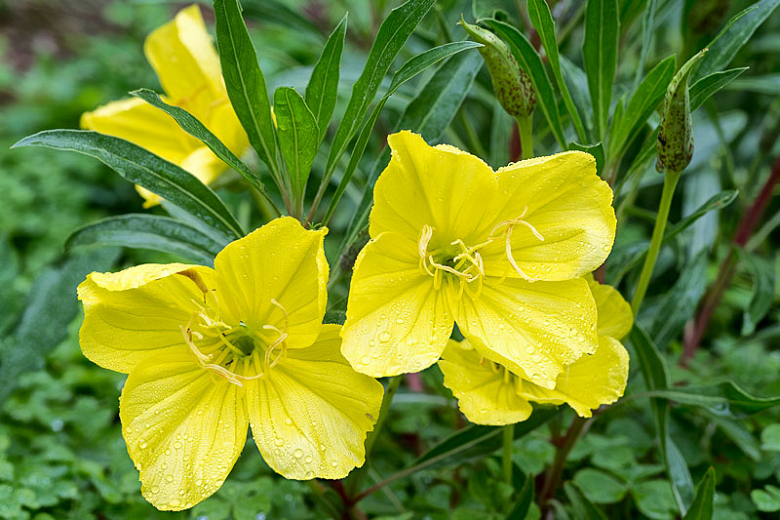Oenothera pallida (Pale Evening Primrose)
Oenothera pallida (Pale Evening Primrose) is a charming rhizomatous perennial boasting fragrant, satiny white flowers, with the delicate texture of crumpled silk. Large, 3 in. wide (7 cm), the pretty flowers open from reddish purple buds and become soft pink with age. Blooming in mid to late spring, the flowers open in the evening and remain open until late morning.
Oenothera pallida (Pale Evening Primrose) is a charming rhizomatous perennial boasting fragrant, satiny white flowers, with the delicate texture of crumpled silk. Large, 3 in. wide (7 cm), the pretty flowers open from reddish purple buds and become soft pink with age. Blooming in mid to late spring, the flowers open in the evening and remain open until late morning. They attract bees, moths and butterflies. They rise on erect to sprawling, reddish stems and contrast nicely with the narrowly lanceolate to ovate, irregularly-toothed leaves. A valuable plant for its ability to grow in hot, dry sites and tolerate drought. Pale Evening Primrose will spread by running rhizomes and self-seed when happy.
- Grows up to 4-20 in. tall (10-50 cm) and 10-12 in. wide (25-30 cm).
- Best in full sun to part shade in sandy or rocky, dry to medium, well-drained soils. Drought tolerant once established.
- Great choice for wildflower gardens, rock gardens or naturalized areas. May be planted in beds and borders and is a good edging plant.
- No serious pest or disease issues.
- Easily grown from seeds sown outdoors in spring.
- Native to the western United States.
Requirements
| Hardiness | 4 – 10 |
|---|---|
| Plant Type | Perennials |
| Plant Family | Oenothera – Primroses – Sundrops |
| Exposure | Full Sun, Partial Sun |
| Season of Interest | Spring (Mid,Late) |
| Height | 4" – 2' (10cm – 60cm) |
| Spread | 10" – 1' (25cm – 30cm) |
| Spacing | 12″ (30cm) |
| Water Needs | Low |
| Maintenance | Low |
| Soil Type | Loam, Sand |
| Soil pH | Acid, Alkaline, Neutral |
| Soil Drainage | Well-Drained |
| Characteristics | Fragrant, Showy |
| Native Plants | United States, Pacific Northwest, Idaho, Oregon, Washington, Rocky Mountains, Colorado, Montana, Utah, Wyoming, Southwest, Nevada, Arizona, New Mexico, Texas |
| Tolerance | Deer, Drought, Dry Soil, Rocky Soil |
| Attracts | Bees, Butterflies |
| Garden Uses | Beds and Borders, Edging, Patio and Containers |
| Garden Styles | Gravel and Rock Garden, Informal and Cottage, Prairie and Meadow |
